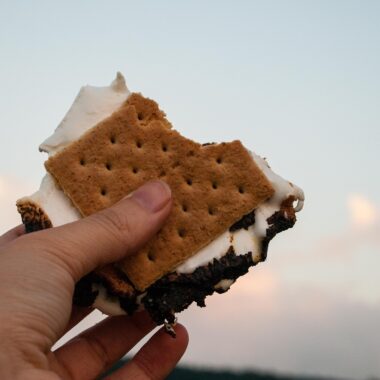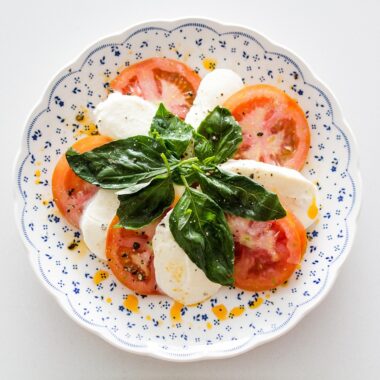Starting a food blog can be an exciting journey for anyone passionate about cooking, baking, and sharing culinary creations. But one of the first questions that aspiring food bloggers often ask is: “How many recipes do I need before launching my blog?” While there isn’t a one-size-fits-all answer, this article will explore key factors to help you decide how many recipes to start with, provide practical tips for content creation, and set you up for success in the food blogging world.
Why Do You Need Recipes Before Launching?
Recipes are the backbone of a food blog. They showcase your culinary expertise, establish your blog’s niche, and attract readers who are eager to try your dishes. Starting with a solid base of recipes ensures that visitors have plenty of content to explore, which can:
Create a Strong First Impression: A well-stocked blog immediately communicates professionalism and dedication.
Encourage Reader Engagement: Multiple recipes allow readers to spend more time on your site, increasing the likelihood of comments, shares, and subscriptions.
Boost SEO Performance: Search engines favor blogs with a variety of content, helping you rank higher in search results.
Set the Tone for Your Niche: Whether you focus on vegan dishes, quick weeknight meals, or decadent desserts, having multiple recipes helps define your blog’s identity.
How Many Recipes Are Ideal for a Launch?
While there’s no hard rule, a general guideline is to have 10 to 20 well-crafted recipes before launching your blog. Here’s why this range works:
Variety and Depth: A minimum of 10 recipes ensures that your blog doesn’t feel sparse. With 20 recipes, you can offer a wider range of options, appealing to a broader audience.
Establishing Categories: This range allows you to create 3–4 categories (e.g., appetizers, main courses, desserts, and beverages) with several recipes in each, giving your blog a balanced appearance.
Testing the Waters: Starting with this number gives you a manageable workload while allowing room for feedback from your early audience.
Content Planning: A modest number of recipes prevents you from exhausting all your ideas before you’ve even built a following.
Types of Recipes to Include
The types of recipes you choose to feature at launch should reflect your blog’s niche and audience. Here are some ideas:
Signature Dishes
Highlight your best and most unique recipes.
These dishes should set your blog apart and define your culinary style.
Evergreen Recipes
Include timeless recipes that readers can use year-round, such as chocolate chip cookies, pasta dishes, or smoothies.
Seasonal Favorites
Launching in the summer? Include barbecue recipes. Starting in winter? Add comfort food options.
Seasonal recipes are great for attracting timely searches.
Quick and Easy Options
Many readers are looking for quick solutions to mealtime challenges. Including 15- to 30-minute recipes can broaden your appeal.
Diet-Specific Recipes
If you’re catering to a specific audience (e.g., keto, gluten-free, vegan), make sure your launch lineup reflects that focus.
Crowd-Pleasers
Include recipes that have broad appeal, like mac and cheese, brownies, or roast chicken, to draw in a diverse audience.
Steps to Prepare Your Recipes for Launch
Creating a set of launch-ready recipes involves more than just writing down ingredients and instructions. Here are essential steps to prepare your recipes:
Test and Perfect Your Recipes
Test each recipe multiple times to ensure consistency and reliability.
Take detailed notes during the process to refine measurements and techniques.
Write Clear Instructions
Use simple, easy-to-follow language.
Break down steps logically and include cooking times, temperatures, and tips.
Photograph Your Dishes
High-quality photos are crucial for attracting readers.
Use natural lighting, appealing props, and thoughtful composition to showcase your food.
Optimize for SEO
Include keywords in recipe titles, descriptions, and alt text for images.
Research trending search terms related to your recipes.
Create Engaging Stories
Share personal anecdotes, cooking tips, or cultural insights related to your recipes.
This storytelling element can make your blog more relatable and engaging.
Planning for Consistent Content Post-Launch
Launching with 10–20 recipes is just the beginning. Consistent content creation is key to growing your audience and maintaining engagement. Here’s how to plan for ongoing success:
Set a Publishing Schedule
Decide how often you’ll post new recipes (e.g., weekly, biweekly).
Consistency helps retain readers and builds anticipation for new content.
Batch Cooking and Content Creation
Dedicate time to batch-cook and photograph several recipes at once.
This approach saves time and ensures you always have content ready to publish.
Diversify Content Types
In addition to recipes, consider publishing related content like cooking tips, equipment reviews, or meal planning guides.
Engage with Your Audience
Respond to comments, ask for feedback, and incorporate reader suggestions into future recipes.
Plan Seasonal and Trendy Recipes
Stay ahead of food trends and seasonal shifts to keep your content relevant and exciting.
Tips for a Successful Launch
Launching your food blog is a milestone, and proper planning can set the stage for success. Here are some additional tips:
Design a Professional Blog
Choose a user-friendly platform like WordPress or Squarespace.
Invest in a visually appealing design that complements your recipes and photos.
Promote Your Blog
Use social media platforms like Instagram, Pinterest, and Facebook to share your recipes.
Collaborate with other bloggers or influencers in your niche to expand your reach.
Include a Call-to-Action (CTA)
Encourage readers to subscribe to your newsletter, follow your social media accounts, or comment on your posts.
Analyze and Improve
Use tools like Google Analytics to monitor your blog’s performance.
Identify popular recipes and areas for improvement based on reader behavior.
Balancing Quality and Quantity
While it’s tempting to aim for a large number of recipes at launch, quality should always take precedence over quantity. A handful of well-crafted recipes with stunning photos and engaging stories will leave a stronger impression than a long list of mediocre ones. Focus on:
Accuracy: Ensure every recipe is foolproof.
Presentation: Invest time in food styling and photography.
Uniqueness: Highlight your personal touch and creativity.
Final Thoughts
The number of recipes you need to start a food blog depends on your goals, niche, and available time. A launch with 10–20 high-quality recipes provides a solid foundation for attracting readers, establishing your blog’s identity, and setting the stage for consistent growth. Remember, the key to success isn’t just about numbers—it’s about creating recipes that inspire, delight, and keep readers coming back for more. With passion, planning, and perseverance, your food blog can become a flavorful success story!


















